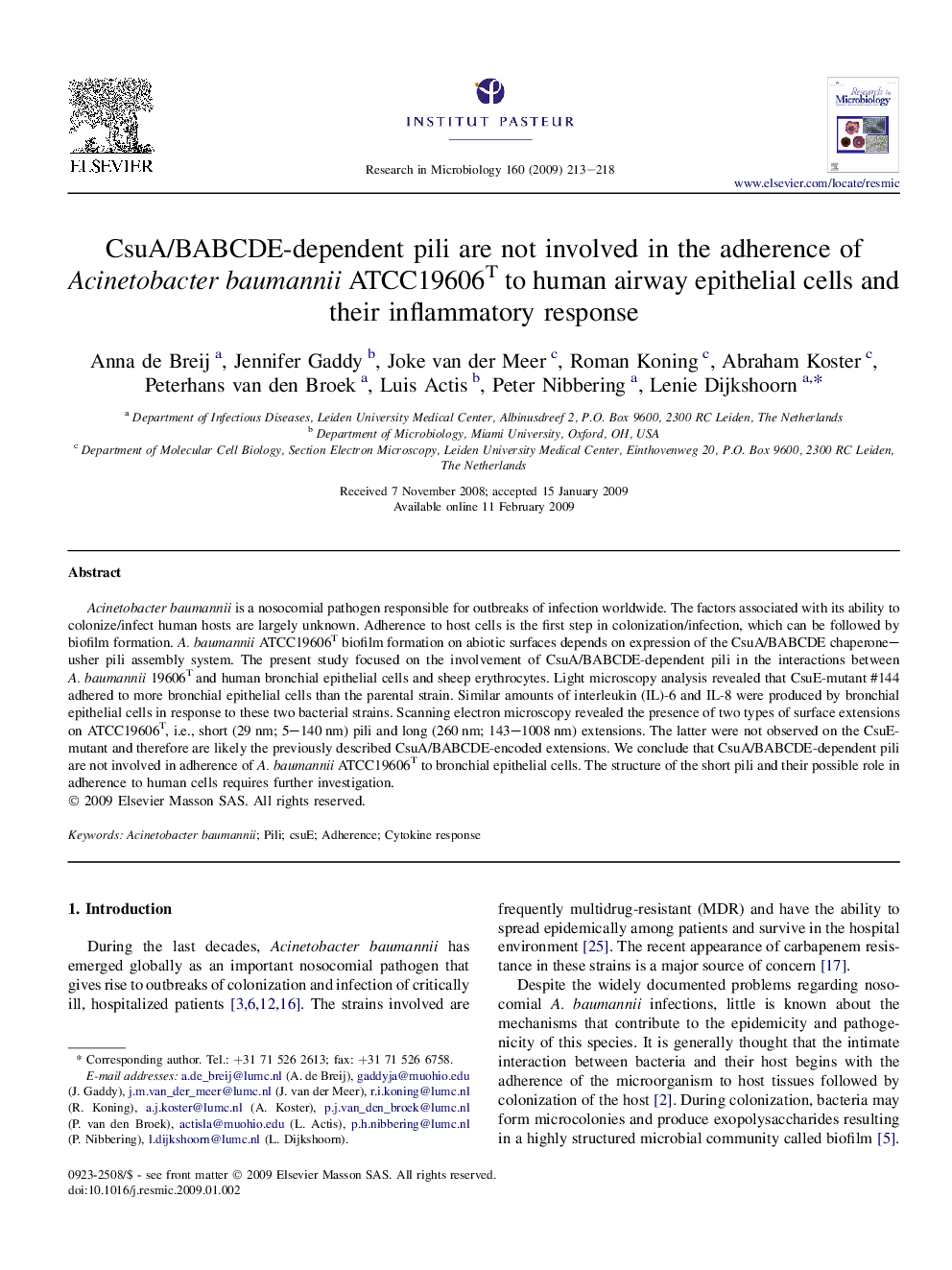| Article ID | Journal | Published Year | Pages | File Type |
|---|---|---|---|---|
| 4359385 | Research in Microbiology | 2009 | 6 Pages |
Acinetobacter baumannii is a nosocomial pathogen responsible for outbreaks of infection worldwide. The factors associated with its ability to colonize/infect human hosts are largely unknown. Adherence to host cells is the first step in colonization/infection, which can be followed by biofilm formation. A. baumannii ATCC19606T biofilm formation on abiotic surfaces depends on expression of the CsuA/BABCDE chaperone–usher pili assembly system. The present study focused on the involvement of CsuA/BABCDE-dependent pili in the interactions between A. baumannii 19606T and human bronchial epithelial cells and sheep erythrocytes. Light microscopy analysis revealed that CsuE-mutant #144 adhered to more bronchial epithelial cells than the parental strain. Similar amounts of interleukin (IL)-6 and IL-8 were produced by bronchial epithelial cells in response to these two bacterial strains. Scanning electron microscopy revealed the presence of two types of surface extensions on ATCC19606T, i.e., short (29 nm; 5–140 nm) pili and long (260 nm; 143–1008 nm) extensions. The latter were not observed on the CsuE-mutant and therefore are likely the previously described CsuA/BABCDE-encoded extensions. We conclude that CsuA/BABCDE-dependent pili are not involved in adherence of A. baumannii ATCC19606T to bronchial epithelial cells. The structure of the short pili and their possible role in adherence to human cells requires further investigation.
